When taking care of clients in the hospital you don’t have all day to look up stuff about the med you are about to give. You just need to know the most important and relevant information about giving a med. In this post, I’m going to break down what you need to know for musculoskeletal meds and how I simplified it for the NCLEX and your studying. In addition, I’ll show you a couple of NCLEX-style questions that apply that content.
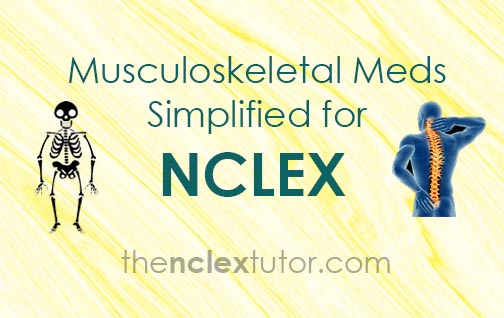
Main Classifications
- Antigout
- Antiosteoporotic
- Muscle relaxers
- Vitamins & Electrolytes
1) Antigout Meds
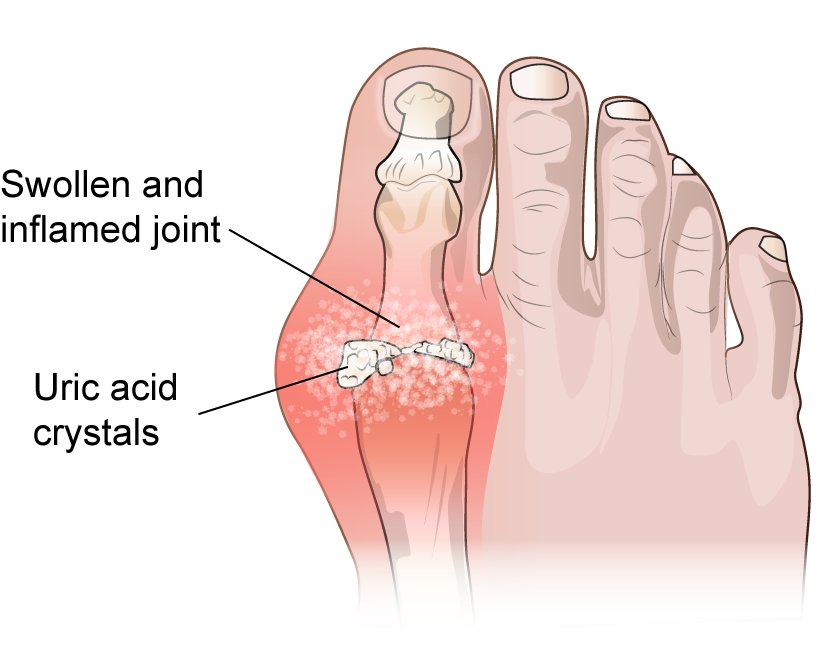
Gout
- antigout meds include allopurinol and colchicine
- they treat and prevent gout by decreasing uric acid levels
- they also prevent high uric acid levels from chemotherapy
- the “KILLER” adverse reaction is that they are nephrotoxic so monitor BUN, creatinine and urine output
- also avoid foods with purines in them since purines break down into uric acid
- foods with purines include meat and alcohol
2) Antiosteoporotic Meds
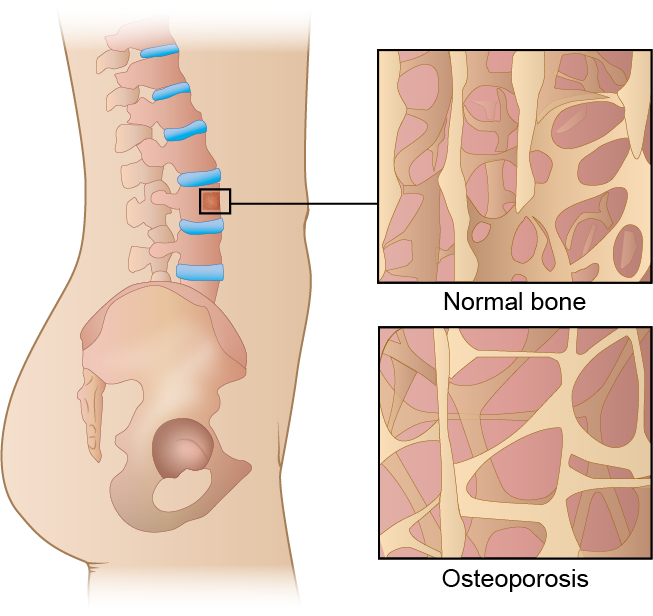
Osteoporosis
- antiosteoporotic meds include alendronate and risedronate (notice they both end in -dronate)
- they prevent osteoporosis
- take these meds in the early AM on an empty stomach and full glass of water; and have client sit upright for 30 minutes to prevent esophageal irritation
3) Muscle relaxers
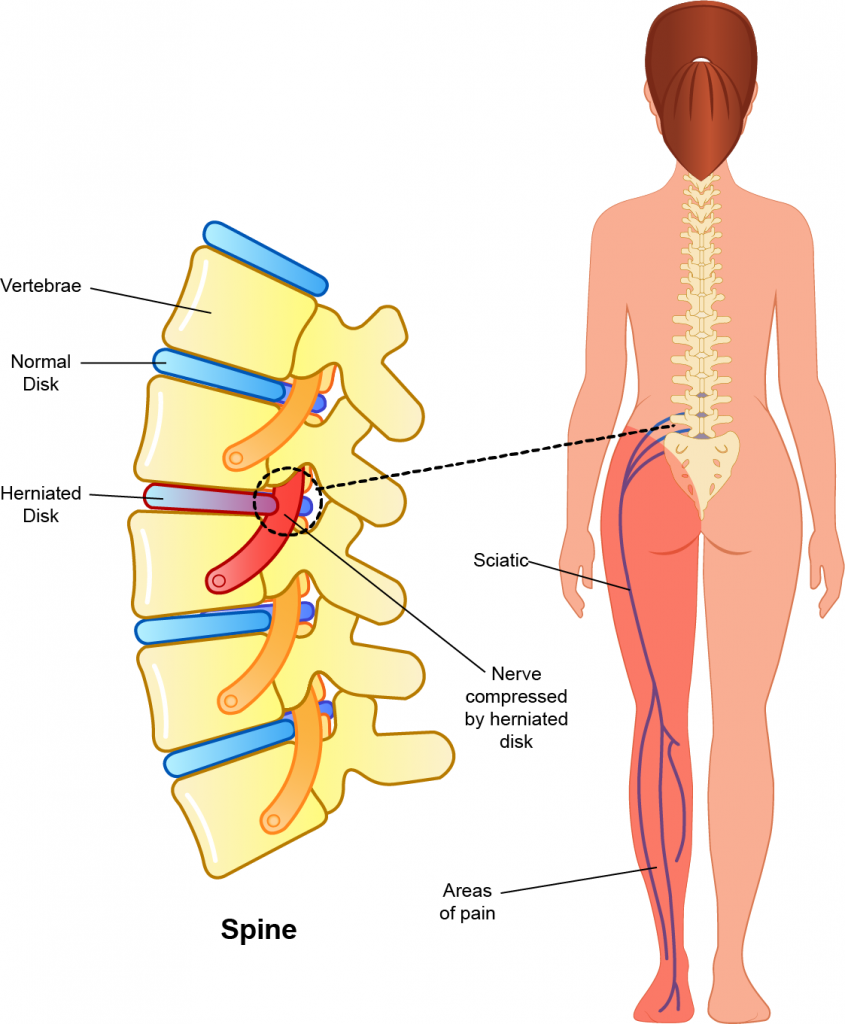
Sciatica pain
- muscle relaxers include carisoprodol, cyclobenzaprine, baclofen, and methocarbamol
- they relax the muscles for a variety of conditions (sciatica pain, muscle spasms, multiple sclerosis, cerebral palsy and more)
- the main common/mild side effects are sedation, orthostatic hypotension, and anticholinergic properties
- the nursing considerations are to implement safety and falls precautions (due to sedation and orthostatic hypotension)
- anticholinergic side effects cause the client to “dry up”; urinary retention, dry eyes and blurry vision, dry mouth and constipation
- due to the anticholinergic side effects assess ability to urinate, the eye sight, give ice chips, and encourage fluids, fiber and walking
4) Vitamins & Electrolyte
- vitamins include chlecalciferol and ergocalciferol (both end in -ciferol and are Vitamin D) and are given to treat low vitamin D levels and help increase the absorption of calcium
- calcium chloride is given to prevent osteoporosis
- take calcium and vitamin D together for better absorption to prevent osteoporosis
NCLEX-practice questions for Musculoskeletal Meds
I chose two random questions from the online Saunders questions to show how I would apply the content in a question.
Question #1 about Gout
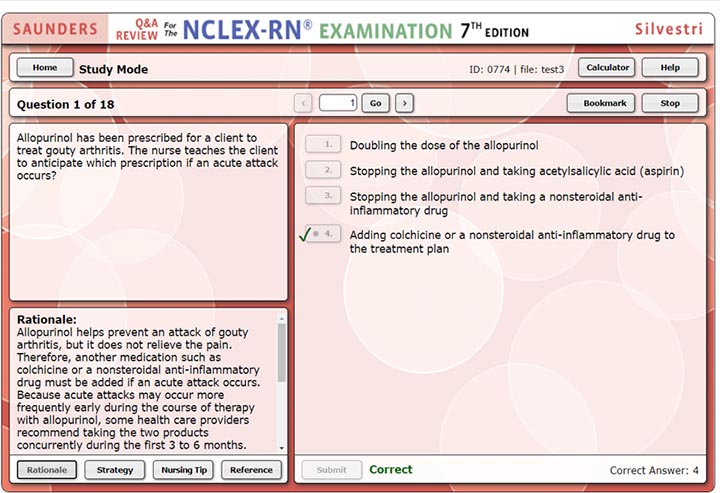
This question is asking what med would I give to a client with gouty arthritis who is having an acute attack and is also is taking allopurinol? I know I wouldn’t double the dose ever! So #1 is out of the question. If someone has gout I know they definiteley need a gout medicine so I wasn’t going to stop the allopurinol and give aspirin instead. #3 seemed like a similar answer to #2 so I also got rid of that answer. #4 is saying to add another gout med or an NSAID. #4 seems to make the most sense since they client is having an acute attack and I may need to give another med.
Question #2 about baclofen
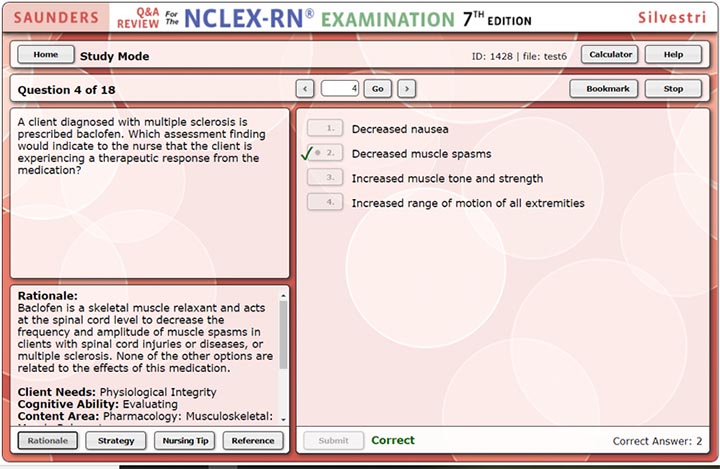
This question is asking you to choose the symptom data that shows that baclofen is working. All you have to know is what baclofen is for and you can easily get the answer. Baclofen is a muscle relaxer and can help prevent muscle spasms. #2 is easily the answer. It’s not an antiemetic so #1 is not an answer. #3 and #4 both sound like really good findings but they are not as specific to a muscle relaxer as #2.
To keep the musculoskeletal meds organized I wrote a book and put all the meds into a spreadsheet format to make it easier to read and write notes on.
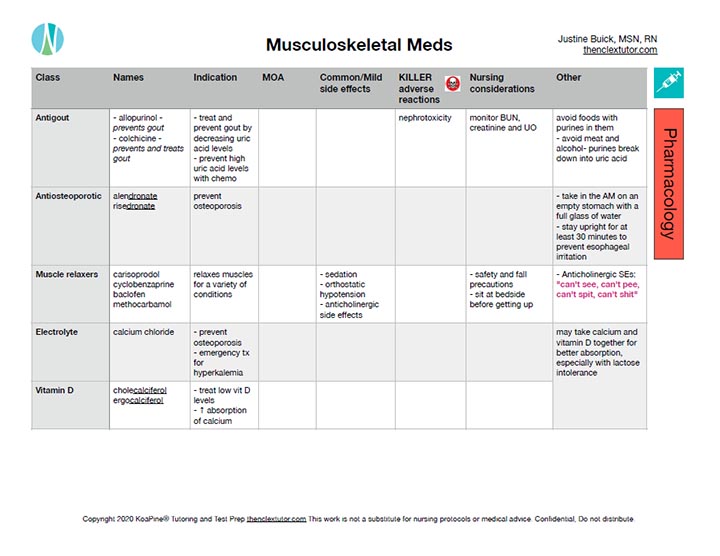
If you liked this blog post about musculoskeletal meds simplified for the NCLEX, then you will love my NCLEX Nugget Pages book. My book contains content for all the basic nursing content you’ll get asked about on the NCLEX and nursing exams with lots of pics for visual learners. Meds are especially a hard topic and I’ve simplified it for you.
Remember passing the NCLEX doesn’t have to be complicated if you can simplify your learning. I want to help you make the transition from student to career! Feel free to contact me for private tutoring using the form below.